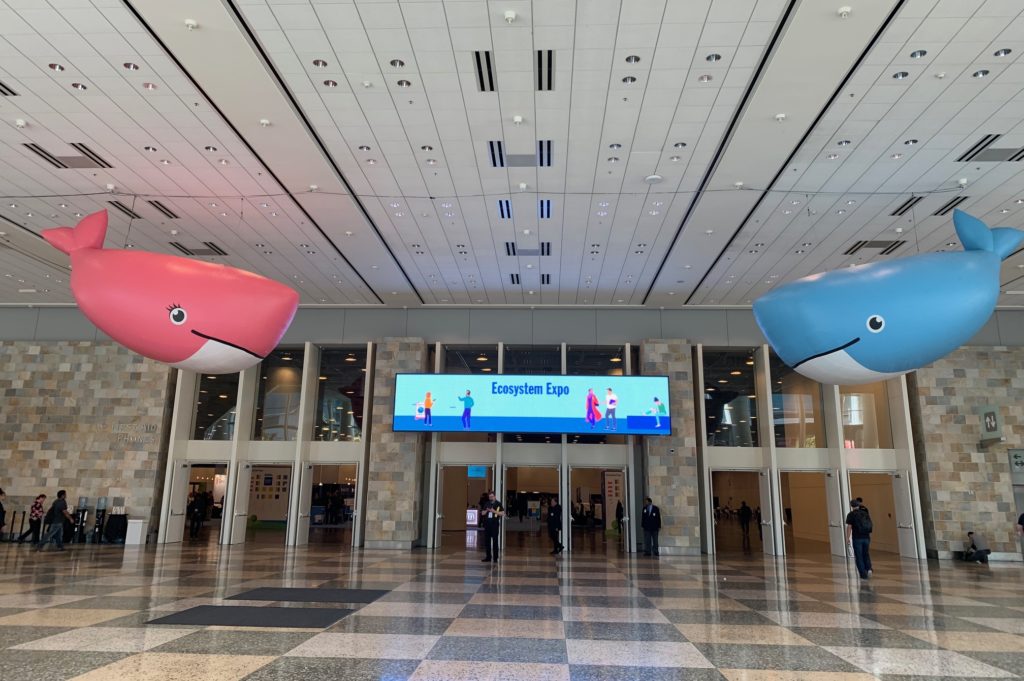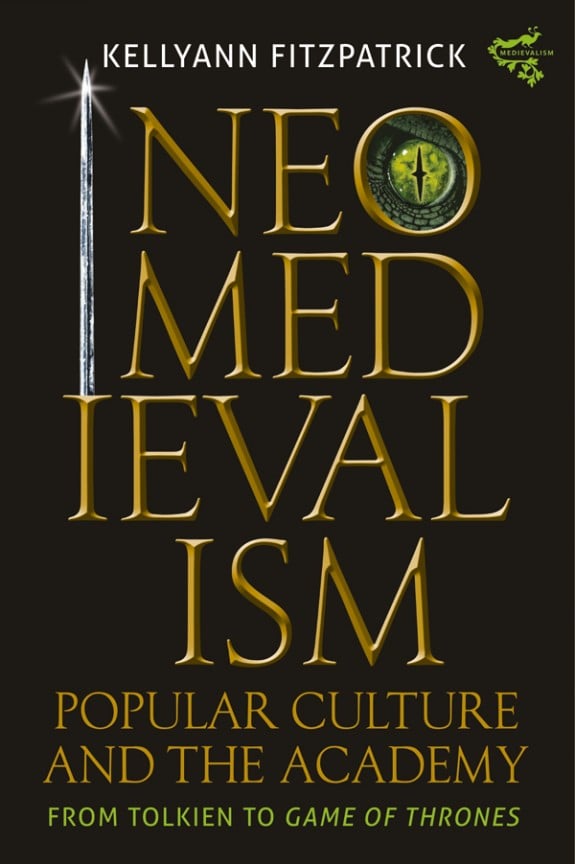
One of the best parts about being an analyst: you get to choose the experiential framework from which you analyze a given piece of tech or event. Events, especially, offer us a myriad of lenses. At a keynote you can choose to sit up front in a section reserved for press and watch the reactions on the faces of the executives nearby; you can also sit in the back with the rest of the crowd and see if the cheers/jeers from the proverbial peanut gallery match those in the rest of the room. You have the option of staying ensconced in analyst program events, often with access to a special press room; alternatively, you can pop into a given session and experience it as would most other attendees. You can measure the temperature of an event based on who you end up chatting with at lunch, see what the vendors at the expo have to say, or get an often outside view of an event from non-conference meetings with clients who happen to be in the area.
I had all of these options available to me last month when I attended (and spoke on a panel at) DockerCon 2019 in San Francisco. The moment that stands out the most for me—the one that provided the framework through which I evaluated the rest of the conference—was my morning walk from my hotel to the first day’s keynote on Tuesday. I fell in step with an attendee who was making the same trek. While I do not recall his name, his reason for attending the conference sticks out in my mind: although he looked forward to the keynotes and other talks, he was there primarily for the Thursday/Friday training sessions. His organization had selected Docker as their path for modernizing their existing applications, and he had been tasked with learning how to make this happen. This chance interaction pushed me to view DockerCon beyond the crafted announcements and hype, the showmanship and cocktail receptions, to the business of what Docker—as a company and a technology—enables. From this perspective here are my DockerCon 2019 takeaways.
Modernization is still big business
As my walking comrade indicated, many organizations arrive at Docker as a solution for legacy app modernization and/or lift-and-shift. In a continuation of a theme my colleague James noted from last year’s conference, DockerCon 2019 had numerous sessions and customer case studies dedicated to legacy application transformation. Indeed, even the Retro Gaming session I attended included a nod to the business of legacy collateral.
“It doesn’t get much more legacy than this…” pic.twitter.com/jnCnaQtNAC
— KellyAnn Fitzpatrick (@drkellyannfitz) April 30, 2019
Strategically, one of the best customer stories I heard at DockerCon came from Don Bauer and Mike Noe of Citizens Bank speaking about their team’s containerization journey. The Tolkien-esque title of their public session, From Swarm to Kubernetes (and Back Again), captures the following ordered movements at Citizens Bank:
- November 2016: begin containerization strategy using Swarm, resulting in the first production cluster in April 2018.
- November 2018: migrate some “Core” data services to Kubernetes (via Docker Enterprise); reasons cited include Helm, Operator patterns, and “vendor pressure”.
- January 2019: move these services back to Swarm. Reasons cited include new tools (e.g., Docker App, which solved some packaging issues), the realization that Kubernetes did not meet their needs in certain ways (e.g., there was no way to grant individual users access to a subset of nodes), and the “simplicity and convenience” of Swarm most closely matched the team’s philosophy and processes.
While the reasons for moving back to Swarm are themselves compelling, the sequence of moves in itself gives Docker a very strong narrative argument for Swarm’s survival in a market that is so enchanted with Kubernetes.
Docker gets a lot done in a demo
As a medievalist, I appreciated the Game of Thrones themed demos presented during the first day’s keynote.
Game of Thrones themed demo at DockerCon 😂 pic.twitter.com/KhLmHE9Cl3
— KellyAnn Fitzpatrick (@drkellyannfitz) April 30, 2019
GoT references aside, the setup showcased new Docker Enterprise 3.0 features through the lens of developer productivity and with the promise that “As developers you simply need to focus only on writing code, complaining on Twitter, and going to Stack Overflow when you get stuck….not learning a whole new methodology.” Speed and ease of deployment were highlighted as two key components in developer productivity. The audience saw an app created in Docker Desktop Enterprise and deployed with the Docker Kubernetes Services (DKS) in a matter a minutes. A third key point highlighted was that Docker Enterprise 3.0 ensures that Kubernetes environments on developer desktops match those of test and production servers: a move to deliver on the promise of consistency offered by containers.
When possible, focus on affordances over hype
 With social media abuzz with news of the DockerHub data breach that Docker announced the Thursday before the conference, I had expected to hear a lot about the breach in the various meetings I had the day before DockerCon began. While there was some talk of the breach, I was pleasantly surprised to hear much more talk of and enthusiasm for the ARM partnership announcement that came out the Wednesday before.
With social media abuzz with news of the DockerHub data breach that Docker announced the Thursday before the conference, I had expected to hear a lot about the breach in the various meetings I had the day before DockerCon began. While there was some talk of the breach, I was pleasantly surprised to hear much more talk of and enthusiasm for the ARM partnership announcement that came out the Wednesday before.
Likewise, while for some Steve Singh’s last DockerCon as CEO may be overshadowed by the announcement a week later that he would be stepping down from the role (he will stay on as chairman), I am instead impressed by the fact that he opened his last keynote with an announcement of the creation of the Docker Foundation. This philanthropic foundation supports organizations like CodePath, which has gotten some exposure in recent higher ed discussions, and when Singh welcomed CodePath CEO and founder Michael Ellison to the stage to talk about his organization’s goal of increasing diversity in tech through opportunity and access, it made me want to see more segments like this in more keynotes at more tech conferences.
Finally, one of the topics that buzzed continuously through many of the conversations I had at this year’s DockerCon was attendance numbers for conference itself, with some gossip postulating that this year’s attendance had fallen to 3000 from 6000 for the June 2018 event. Much of this buzz theorized that potential attendees had jumped ship for other events (such as KubeCon), perhaps as part of what my colleagues Rachel and James have termed the Hype Cycles and Pendulum Swings that constitute the tech industry. It turns out the the attendance drop was not so dramatic (at 4200 attendees); in any case, as my colleague Stephen has noted, there is something to be said about the quality of developer experience at smaller events. I would argue that it is also important to consider why attendees make their way to an event. For my part, I would take one attendee who (like my walking comrade) is there to take practical steps of education and adoption over ten who are there for swag and cocktail receptions and hype.
Disclaimer: Docker is a client and paid for my T&E for DockerCon 2019.

No Comments